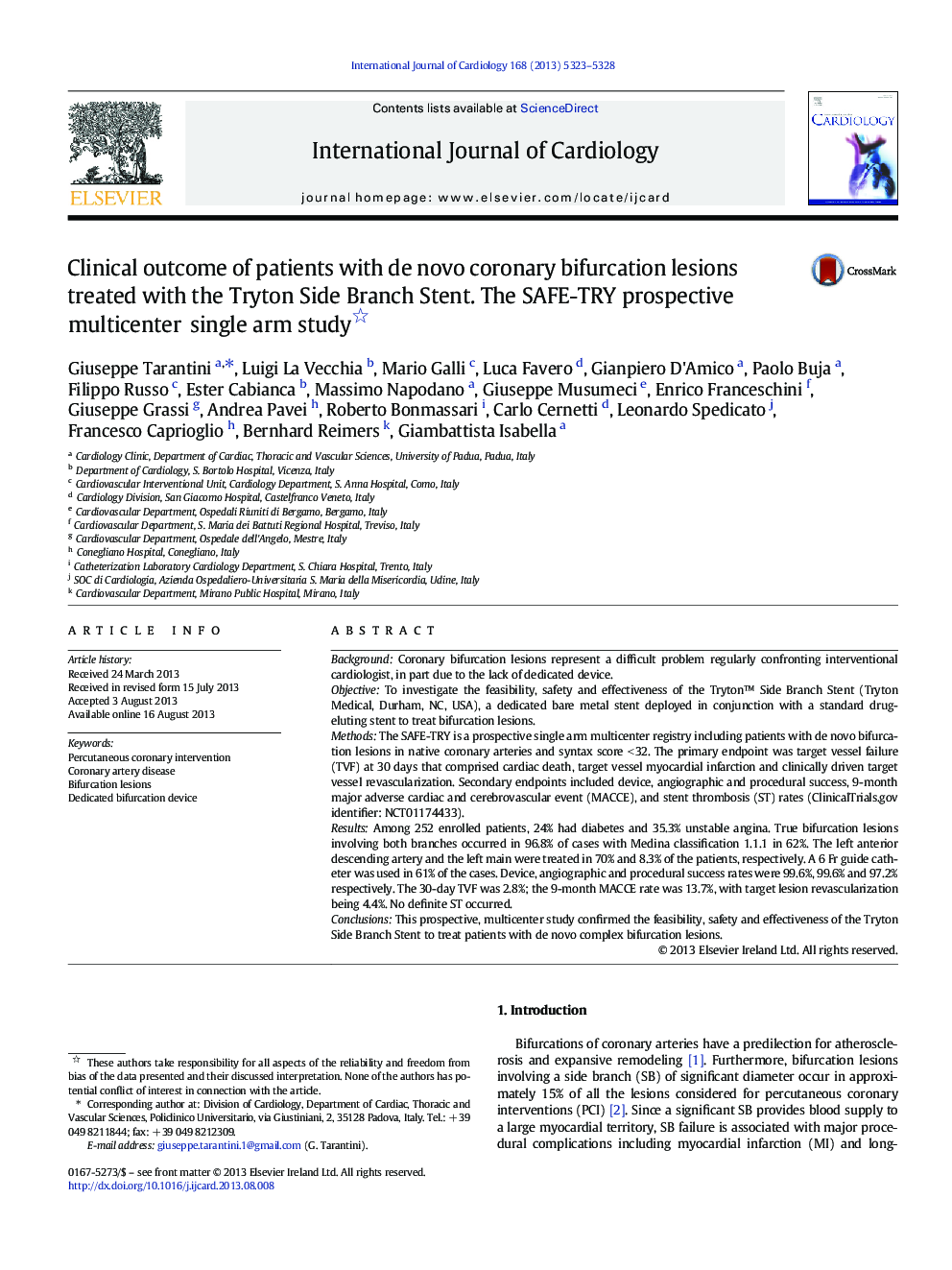| Article ID | Journal | Published Year | Pages | File Type |
|---|---|---|---|---|
| 5975105 | International Journal of Cardiology | 2013 | 6 Pages |
BackgroundCoronary bifurcation lesions represent a difficult problem regularly confronting interventional cardiologist, in part due to the lack of dedicated device.ObjectiveTo investigate the feasibility, safety and effectiveness of the Tryton⢠Side Branch Stent (Tryton Medical, Durham, NC, USA), a dedicated bare metal stent deployed in conjunction with a standard drug-eluting stent to treat bifurcation lesions.MethodsThe SAFE-TRY is a prospective single arm multicenter registry including patients with de novo bifurcation lesions in native coronary arteries and syntax score < 32. The primary endpoint was target vessel failure (TVF) at 30 days that comprised cardiac death, target vessel myocardial infarction and clinically driven target vessel revascularization. Secondary endpoints included device, angiographic and procedural success, 9-month major adverse cardiac and cerebrovascular event (MACCE), and stent thrombosis (ST) rates (ClinicalTrials.gov identifier: NCT01174433).ResultsAmong 252 enrolled patients, 24% had diabetes and 35.3% unstable angina. True bifurcation lesions involving both branches occurred in 96.8% of cases with Medina classification 1.1.1 in 62%. The left anterior descending artery and the left main were treated in 70% and 8.3% of the patients, respectively. A 6 Fr guide catheter was used in 61% of the cases. Device, angiographic and procedural success rates were 99.6%, 99.6% and 97.2% respectively. The 30-day TVF was 2.8%; the 9-month MACCE rate was 13.7%, with target lesion revascularization being 4.4%. No definite ST occurred.ConclusionsThis prospective, multicenter study confirmed the feasibility, safety and effectiveness of the Tryton Side Branch Stent to treat patients with de novo complex bifurcation lesions.
